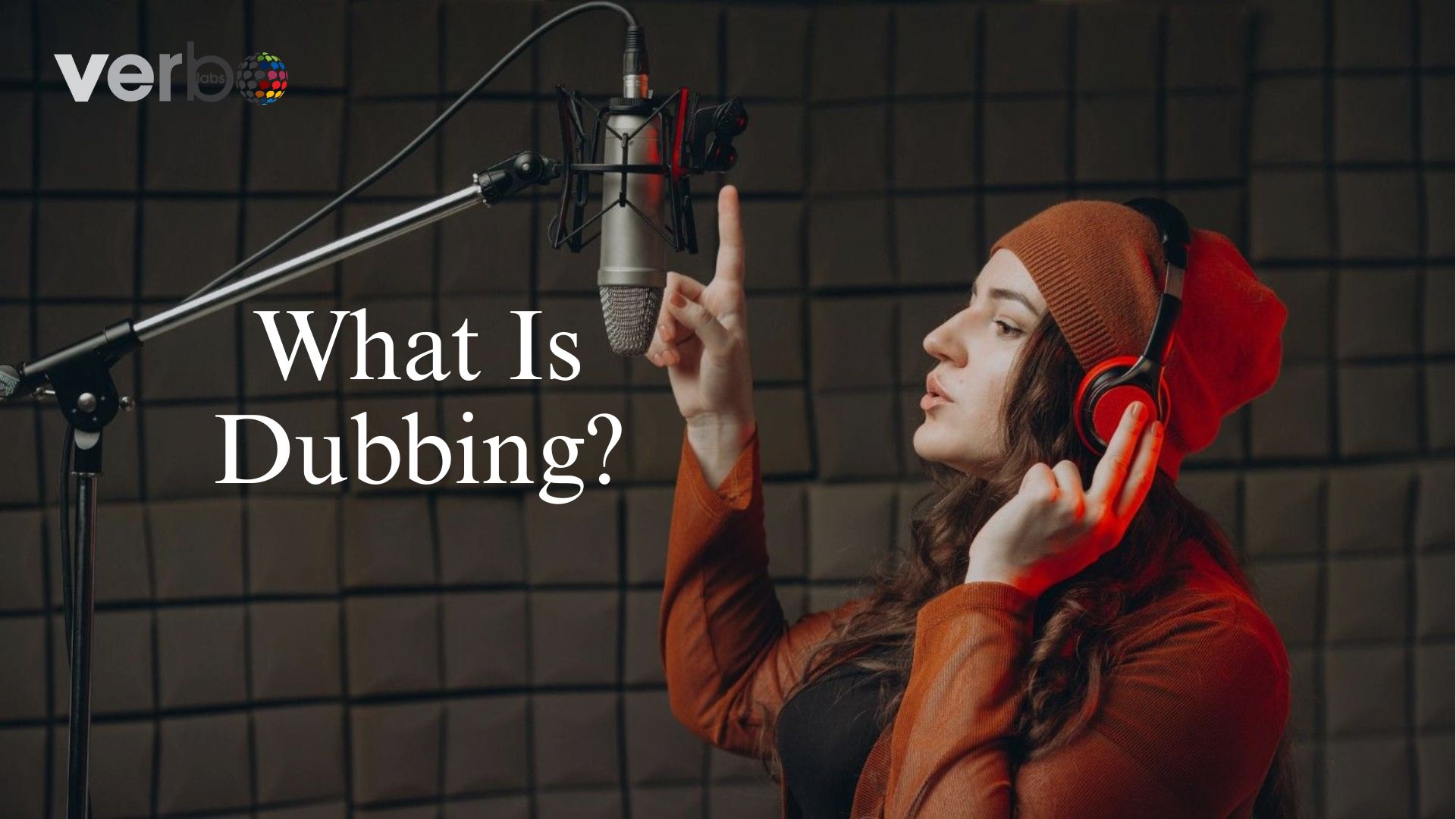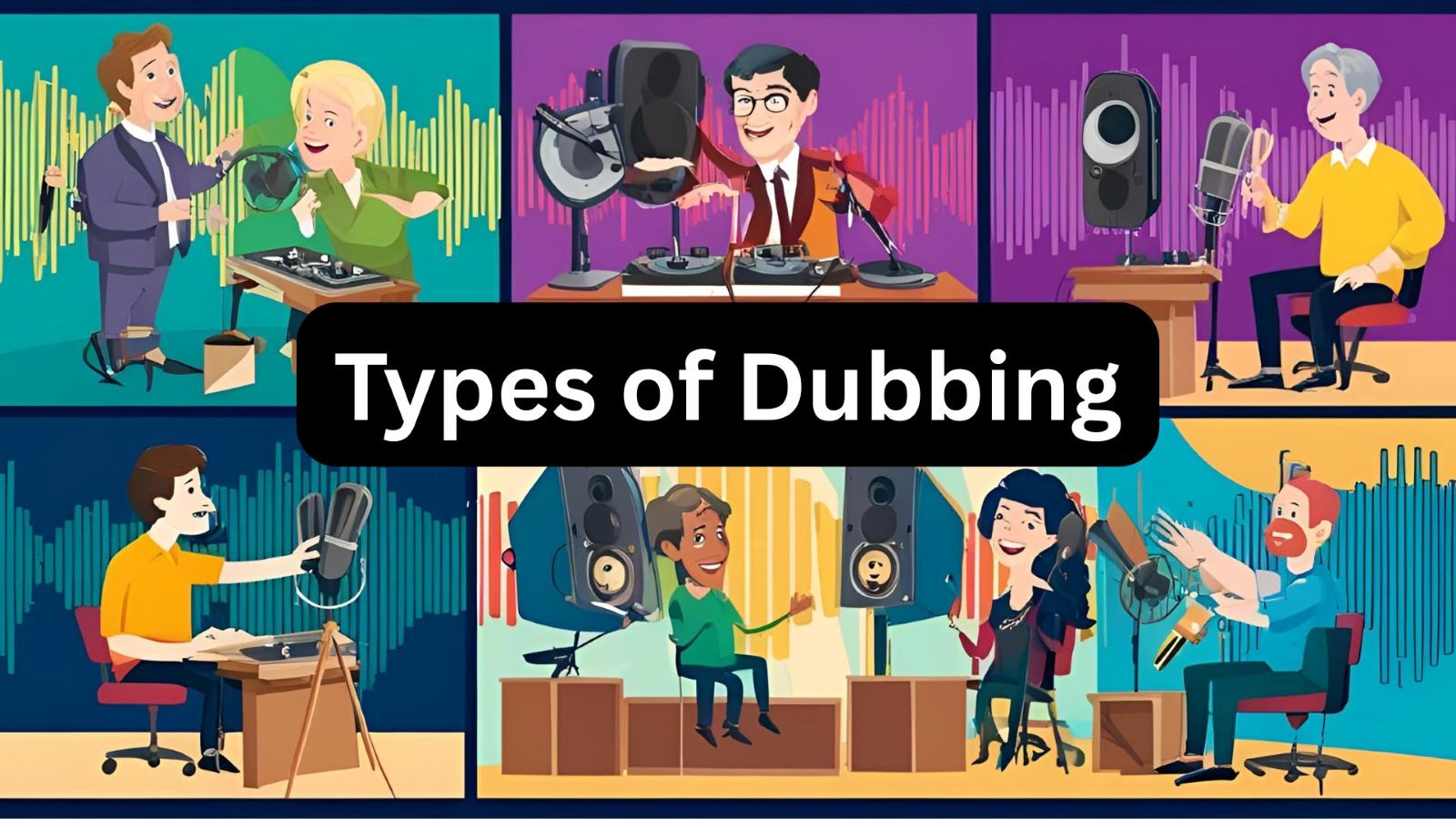
In today’s global media landscape, content transcends boundaries. From Korean dramas and Japanese anime to Hollywood blockbusters, audiences worldwide enjoy content across languages and cultures. But how do they understand every word so naturally?
The answer lies in dubbing — the process that gives content a new voice, in a new language, while preserving the original tone, emotion, and storytelling intent.
This blog explores what dubbing is, how dubbing works, its importance in movies, OTTs, and media production, and how AI dubbing is revolutionizing the industry.
What Is Dubbing? (Definition)
Dubbing is the process of replacing the original dialogue in a film, series, or video with a new voice track in another language. It involves recording new voice tracks that match the original characters’ speech and timing.
It’s also known as language replacement or voice re-recording, and it involves syncing the new voice to the actor’s lip movements and emotional expressions.
Unlike subtitles, which display translated text on-screen, dubbing allows viewers to hear the content in their own language—making it more engaging and accessible. You’ll often find dubbing used in international versions of films, animated shows, documentaries, and corporate training videos. Dubbing meaning in simple terms: It allows audiences to experience a movie or show in their native language without reading subtitles.
Dubbing Definition (In Production Terms)
In film and television postproduction, dubbing refers to re-recording dialogue to improve sound quality or translate it into another language. Example: When a Spanish movie is released in English, the translated voices are recorded and synced with the original visuals — this is called dubbing in movies.
History and Evolution of Dubbing in Films and Media

Dubbing originated in the early 1930s in Hollywood and Europe when sound films emerged. Producers wanted to reach international markets without reshooting entire films.
Initially, the dubbing process was manual and lacked precision. But over the decades, advancements in audio editing, voice-over, and localization technology have transformed it. Today, AI dubbing tools and digital postproduction suites make dubbing faster, more accurate, and emotionally expressive — even allowing AI dubbing with original voice or AI dubbing with emotion for realistic outcomes.
How Does the Dubbing Process Work?

Dubbing is a combination of translation, voice-over recording, and audio synchronization. Here’s how it’s done step-by-step:
1. Script Translation and Localization
The original dialogue is translated into the target language. Translators adapt cultural expressions, idioms, and humor to make it sound natural for local audiences.
2. Voice Casting and Recording
Voice actors are selected to match the tone, gender, and age of the original characters. This step is critical to keeping the performance authentic.
3. Lip-Sync and Emotion Matching
Audio engineers synchronize the new dialogue with the actors’ lip movements and expressions. Emotion matching ensures the dubbed version feels organic — not robotic.
4. Mixing, Postproduction, and Quality Control
Sound engineers blend the new dialogue with background score and sound effects for a polished cinematic experience.
Fun Fact: In professional studios, dubbing and voice-over are handled separately — dubbing replaces dialogue entirely, while voice-over adds a secondary narrative layer.
Types of Dubbing Used in Media

Dubbing varies based on the purpose, platform, and audience:
| Type | Description | Common Use |
| Lip-Sync Dubbing | Matches lip movements perfectly with translated speech | Movies, OTT shows |
| UN-Style Dubbing | Translated voice speaks over the original, which remains faintly audible | Documentaries, interviews |
| AI Dubbing | AI generates translated voices, often cloning the original tone | YouTube, e-learning, global news |
| Live Dubbing | Real-time translation during live broadcasts or events | Gaming, esports, conferences |
Dubbing in Movies, OTTs, and Series
Dubbing in Movies
Movie dubbing ensures international audiences can experience cinema in their language. From Disney films to Bollywood blockbusters, dubbing helps bridge cultures and enhance storytelling.
Dubbing in OTT Platforms and Series
OTT giants like Netflix, Amazon Prime, and Disney+ Hotstar invest heavily in AI dubbing and human dubbing to expand their regional reach.
Example: Popular shows like Money Heist and Squid Game became global hits due to high-quality dubbing in English, Hindi, and multiple regional languages.
Voice-Over vs Dubbing — What’s the Difference?
| Feature | Voice-Over | Dubbing |
| Definition | Adds narration over existing audio | Replaces original dialogue entirely |
| Common Use | Documentaries, ads, explainer videos | Films, OTT series, anime |
| Lip Sync | Not required | Required |
| Audience Experience | Informative | Immersive |
| Production Cost | Lower | Higher |
Both serve different goals: voice-over enhances comprehension, while dubbing transforms storytelling for new audiences.
Dubbing vs Subtitles: What’s Better?
Both dubbing and subtitling have their place, but the choice depends on:
| Aspect | Dubbing | Subtitles |
| Experience | More immersive, native-like | Less immersive |
| Cost | Higher | Lower |
| Accessibility | Better for children and visually impaired | Not ideal for all audiences |
| Engagement | Keeps eyes on visuals | Requires reading |
Dubbing is often favored for entertainment and educational content, while subtitles are common in indie films and quick-to-market videos.
Why Dubbing and Localization Matter Globally
Dubbing is a cornerstone of localization — adapting content linguistically and culturally for different regions.
Key Benefits:
- Expanded Market Reach: Reach audiences in multiple languages.
- Enhanced Accessibility: Supports visually impaired and non-literate audiences.
- Improved Viewer Engagement: Viewers connect emotionally in their language.
- Cultural Relevance: Keeps humor, tone, and expressions intact.
According to Statista (2024), over 70% of non-English OTT users prefer dubbed versions over subtitles.
Industries That Use Dubbing Services
- Entertainment: Movies, OTT, anime, and web series.
- E-learning: Training videos, academic lectures.
- Marketing: Brand ads, corporate videos.
- Gaming: Character voices and cutscenes.
- Corporate Communication: HR and onboarding videos.
Many anime dubbing companies in Japan, the U.S., and India have also adopted AI dubbing to meet increasing global demand.
The Role of AI in Modern Dubbing

AI dubbing is changing the future of voice production. Using machine learning and speech synthesis, it can:
- Generate natural-sounding voices automatically.
- Retain the original speaker’s tone and emotional depth.
- Support multiple languages instantly.
AI Dubbing with Original Voice
Modern AI tools can clone the speaker’s real voice, offering dubbed content that sounds authentic yet multilingual.
AI Dubbing with Emotion
Advanced AI algorithms capture vocal emotions — laughter, anger, sadness — to make dialogues feel natural and humanlike.
While AI dubbing offers scalability and cost-efficiency, human dubbing still excels at cultural adaptation and creative voice performance.
While AI dubbing excels in speed and scale, human dubbing still outperforms in emotional depth, cultural expression, and voice acting quality—making them complementary in many projects.
Is Dubbing AI Legit or Free?
AI dubbing tools like Papercup, DeepDub, and VerboLabs AI solutions are legitimate and increasingly used in professional settings. However, while AI dubbing software may offer free trials, high-quality multilingual dubbing usually requires paid services for better voice quality and accuracy.
Conclusion
Dubbing is more than a postproduction process — it’s an art form that bridges languages and cultures.
From anime to OTT series and corporate videos, dubbing ensures every story reaches the world — authentically and emotionally.
Whether you choose human dubbing for depth or AI dubbing for speed, the goal remains the same: make content universally understood.
Need Professional Dubbing Services?
At VerboLabs, we specialize in:
* Multilingual dubbing across 120+ languages
* Native voice casting and lip-sync precision
* AI dubbing with emotion and original voice replication
* End-to-end postproduction and localization
Bring your content to life with professional dubbing and localization services that truly connect.
Explore VerboLabs Dubbing Services →

Bring Your Story to Life in Every Language!
Partner with VerboLabs for expert dubbing, voice-over, and localization services that capture emotion, culture, and authenticity — across 120+ languages.



